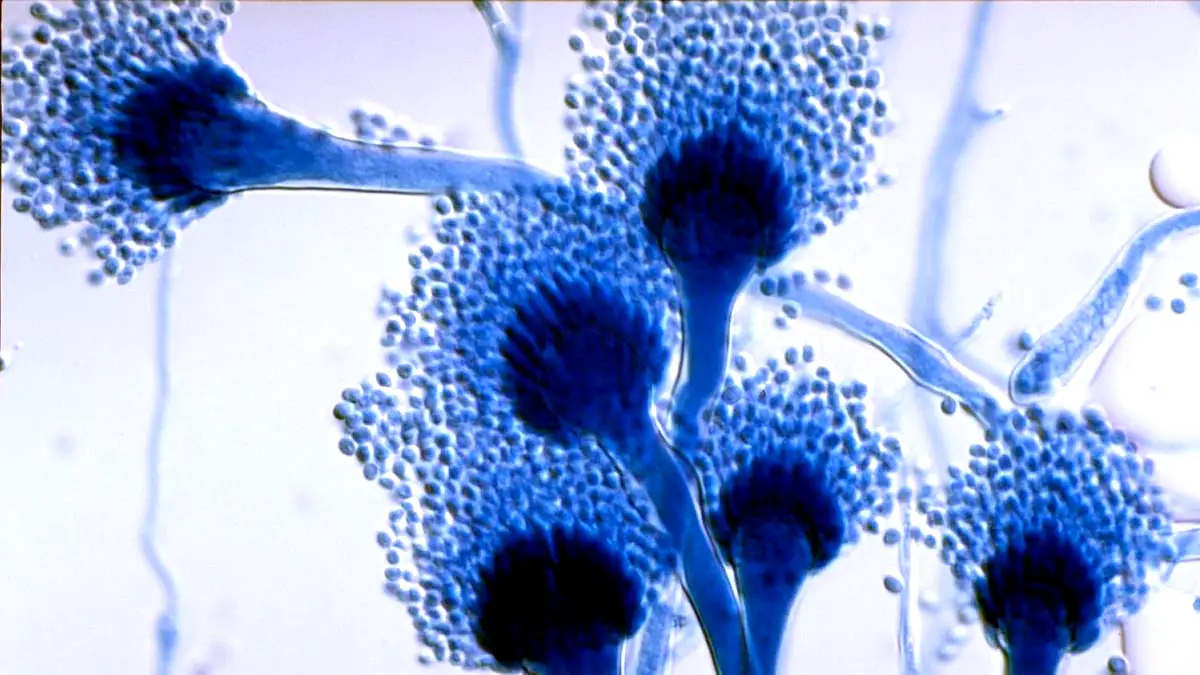Contents
CLASSIFICATION OF ASPERGILLUS
Kingdom :- Mycota
Division :- Eumycota
Sub-division :- Ascomycotina
Class :- Plectomycetes
Order :- Eurotiales
Family :- Eurotiaceae
Genus :- Aspergillus
Aspergillus can be grown on butter, bread, leather or any other similar substance in humid conditions. In rainy season, the fungus is commonly seen on shoes as black, yellow, brown or green dust.
STUDY OF HOSTS, DISEASES AND SYMPTOMS
Most of the species of Aspergillus are saprophytes growing on decaying vegetables., butter, bread, rice, jams, leather, cloth, fabrics, etc. However, a few species are parasites on plants and animals, including human beings.
- niger causes rot disease of pomegranates (Punica granatum; vern. anar; fam. Punicaceae), dates (Phoenix dactylifera; vern. pind khazoor; fam. Palmae) and figs (Ficus carica; vern. anjir; fam. Moraceae). In rot disease, the fruits decay, fungus enters the host through cuts and wounds in the fruits.
- jumigatus, A. flavus and A. niger attack animals including human beings and cause a group of lung diseases collectively known as Aspergilloses. The symptoms of Aspergilloses closely resemble to those of tuberculosis.
- Some species of Aspergillus infect human ear and cause Otomycosis.
STUDY OF VEGETATIVE STRUCTURE
- The mycelium is well developed, profusely branched and septate.
- The segments of the mycelium are uni- or multinucleate. The pigments in the cytoplasm give a characteristic colour to the mycelium of various species (similarly coloured conidiophores and conidia would be present in the same species).
- Some of the hyphae spread superficially over the substratum while others penetrate deep into the substratum. The latter absorb food for the mycelium.
ASEXUAL REPRODUCTIVE STRUCTURES
- Conidia are asexual reproductive units borne on conidiophores.
- Each conidiophore arises from the foot cell of the mycelium and is long and erect hypha, terminating in a bulbous head-the vesicle.
- The vesicle develops a number of bottle-shaped structures called the sterigmata (sing. sterigma) over its entire surface.
- In some species two layers of sterigmata one above the other, are formed. In such a case those of the lower layer are called primary sterigmata and those of the upper, secondary sterigmata. The conidia are borne only by secondary sterigmata.
- Each sterigmata cuts off a chain of basipetally arranged conidia.
- The conidia are coloured and the colour of the conidia depends upon the species.
- Each conidium is uninucleate with an outer fme1y spiny epispore and inner smooth endospore.
- A conidium germinates to form mycelium if it happens to fall on a suitable substratum.
ASCOCARP, ASCI AND ASCOSPORES
- The species of Aspergillus developing perfect stage i.e. cleistothecium are placed under the genus Eurotium.
- The ascospores are produced after reduction division of ascospore mother cell in sac-like cell-the ascus.
- The asci are developed inside a fruiting body the cleistothecium.
- Cleistothecium consists of wall called peridium formed by somatic hyphae, enclosing many asci.
- Each ascus has eight uninucleate pulley wheellike ascospores with an outer sculptured epispore and an inner smooth endospore.
- On germination each ascospore gives rise to a haploid mycelium.
IDENTIFICATION
- Kingdom – Mycota
- Chlorophyll absent
- Reserve food glycogen
- Cell wall of fungal cellulose.
- Division – Eumycota
- A definite cell wall present.
- Sub-division:- Ascomycotina
- Mycelium septate.
- Spores borne endogenously in the ascus.
- Spores in definite numbers, in multiples of two, usually eight.
- Class:- Plectomycetes
- Ascocarp, a cleistothecium.
- Order– Eurotiales
- Cleistothecia sessile
- Family – Eurotiaceae
- Asci lie scattered, hymenium not formed.
- Peridium made of closely interwoven hyphae.
- Genus – Aspergillus
- Conidiophore unbranched.
REFERENCES


Leave a Reply